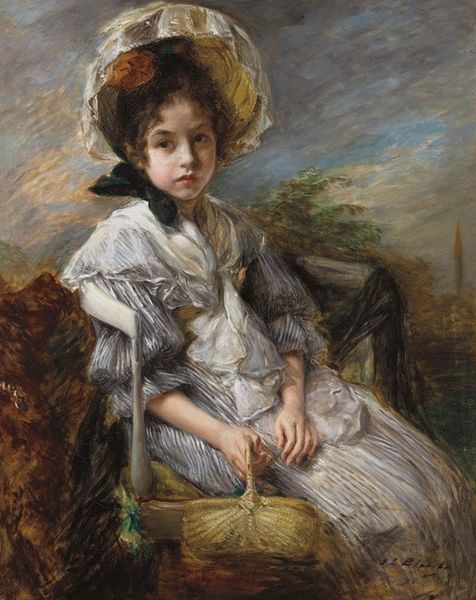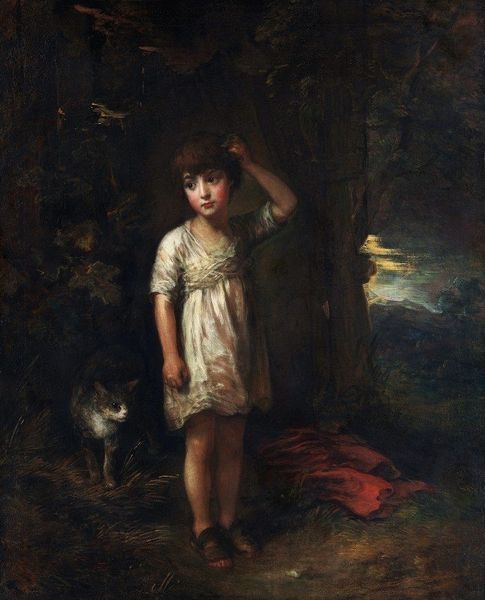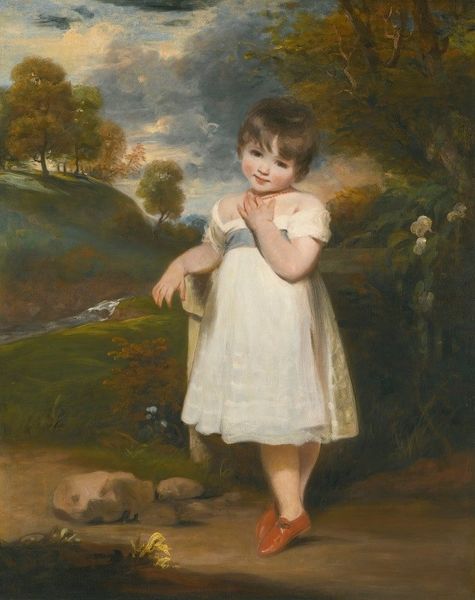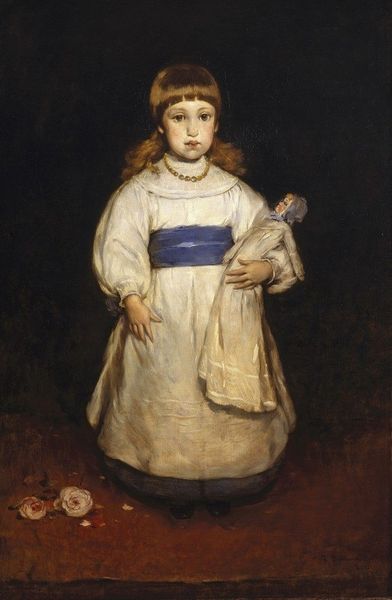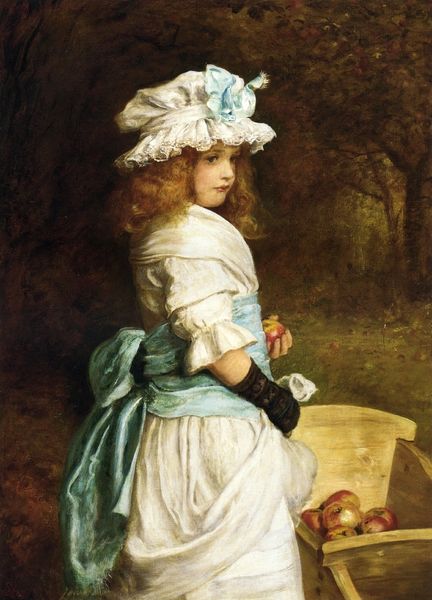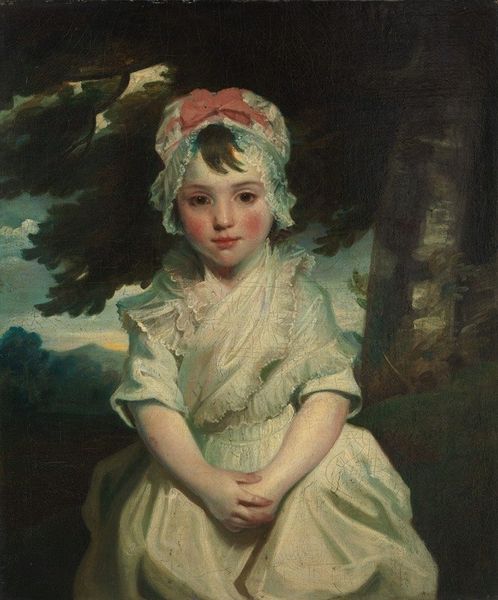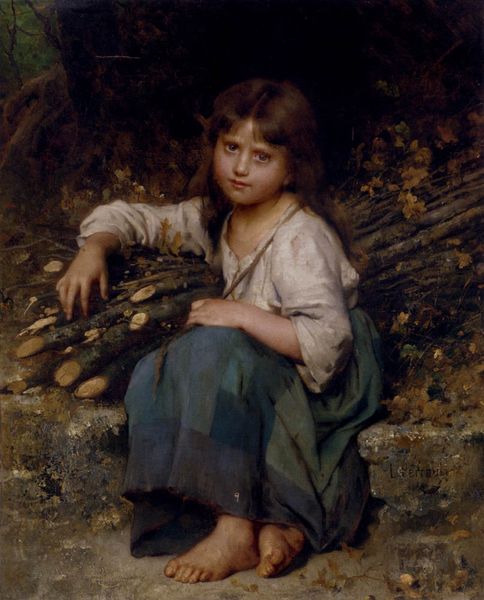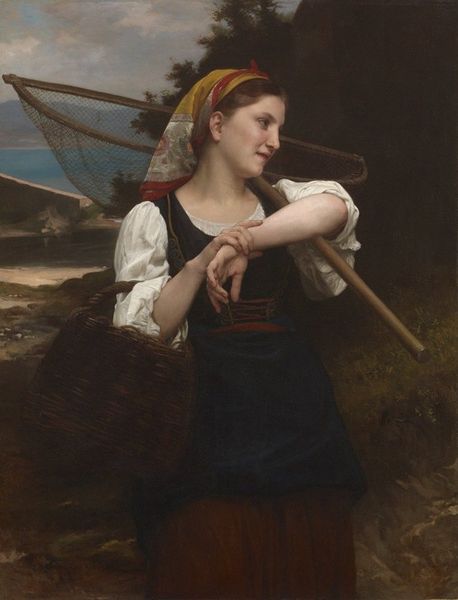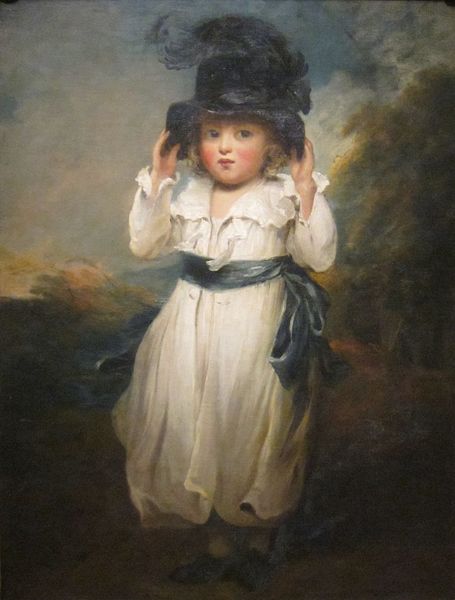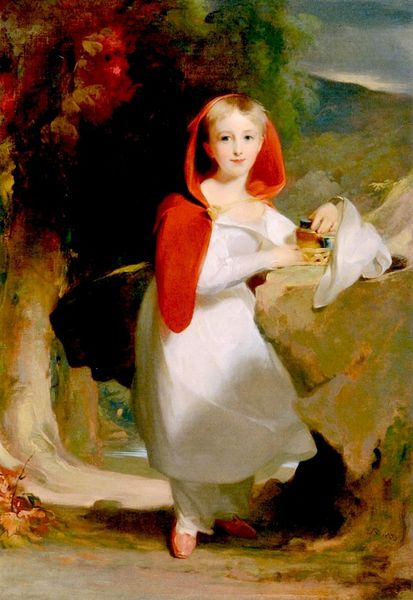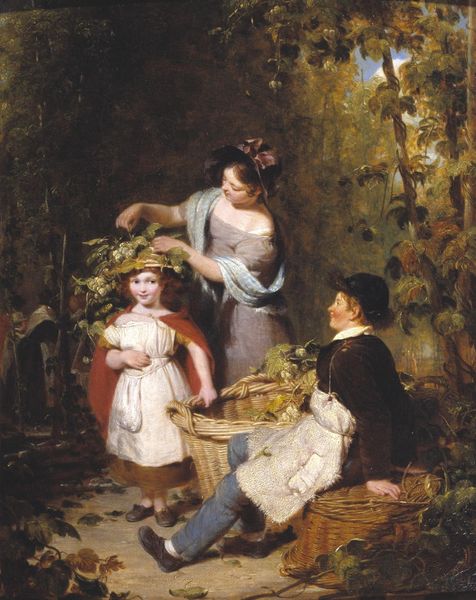
Copyright: Public domain
Curator: Oh, there’s such a wistful feel to this piece. Makes me want to exhale all the stuffy air and remember running barefoot as a kid. Editor: Well, let’s get oriented, shall we? This is “The Little Flower Girl” painted in 1887 by Augustus Edwin Mulready, and crafted with oil paints. Immediately, what jumps out is the socio-economic context: poverty, labor, bare feet on a potentially cold ground... Curator: Yes, it's poignant, isn't it? She holds this simple basket overflowing with wildflowers. Those innocent eyes! They see everything, don’t they? It's realism, but infused with a certain romantic tenderness. Editor: Exactly! But is that tenderness masking something? Note how her clothes are rather worn; you can almost feel the cheapness of the materials and the labour involved in mending them. It prompts questions about production and class division within the Victorian landscape, not just natural landscape. Curator: Maybe, maybe. Or maybe Mulready just wants us to see the beauty that persists even in less-than-ideal conditions. Think of those fairy paintings that were all the rage at the time – maybe it's tapping into that desire to find magic everywhere, even in a young flower girl's existence. It's funny how art can hold so much. Like a mirror to your own soul. Editor: Ah, yes, the "magic". But I think those romantic fairy paintings were often deployed to avoid facing more tangible issues! For me, the social dimensions in this work are more intriguing. Think about the division of labour: who collected those flowers? Who’ll eventually buy them and where? Even something seemingly as beautiful as a simple painting becomes enmeshed within networks of commerce. Curator: Perhaps we can both be right. The longing, the yearning... it can co-exist alongside a sharp awareness of reality, no? Perhaps the flower girl feels both herself. Well, whatever one finds in her story, “The Little Flower Girl” feels more real than I first assumed. Editor: Agreed. It's in acknowledging this complexity—the interplay of beauty and underlying materiality that art begins to reveal deeper truths about ourselves and society. The work challenges assumptions around "high" art as separate from daily toil and allows you to ask interesting questions about the production, meaning and function of art as it shifts and changes through history.
Comments
No comments
Be the first to comment and join the conversation on the ultimate creative platform.
